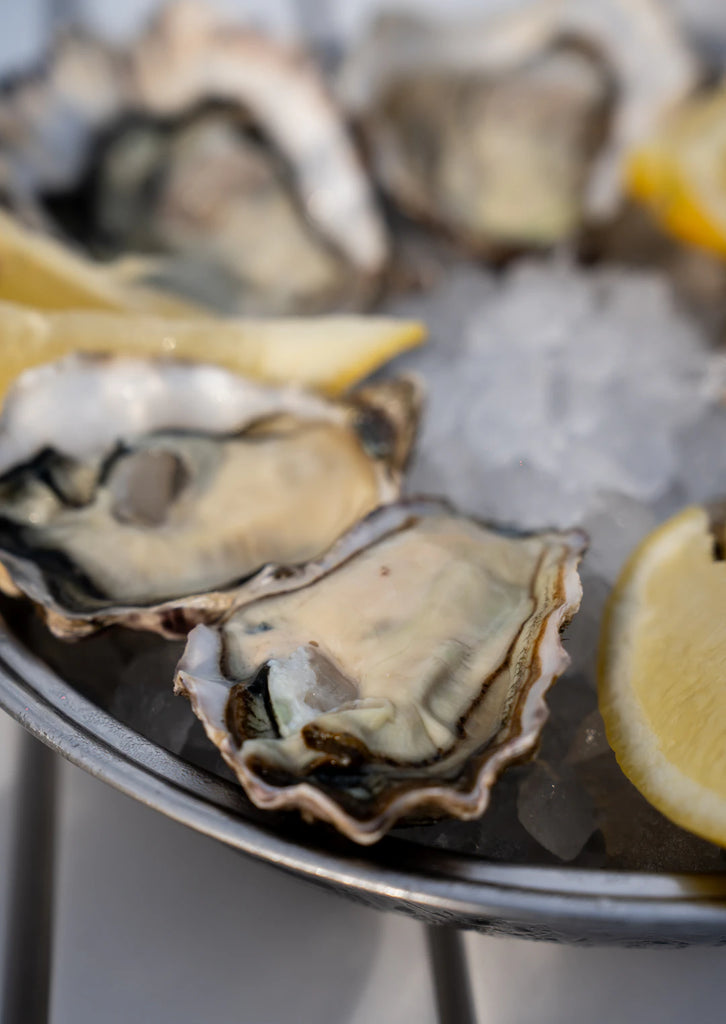The Marvelous Black-Lipped Oyster and Tahitian Pearls

Overview
Tahiti black pearls, created by the black-lipped oyster, are renowned for their unique colors and luster. This blog explores their formation, farming process, economic significance, and cultural symbolism. It highlights the importance of sustainable practices in pearl farming and provides care tips for maintaining these exquisite gems. As demand grows, tahitian pearls remain a luxurious and meaningful choice for consumers, connecting them to a rich heritage and the beauty of nature.
Frequently Asked Questions
1. What are Tahiti black pearls?
2. How are Tahiti black pearls formed?
3. What is the role of the black-lipped oyster in pearl production?
4. What factors affect the quality of Tahiti black pearls?
5. How should I care for my Tahiti black pearls?
Tahiti is renowned for its stunning natural beauty and vibrant culture, but it is perhaps most famous for producing the exquisite tahiti black pearl. These lustrous gems are not just beautiful; they embody a fascinating journey of formation that begins deep beneath the waves. At the center of this journey is the remarkable black-lipped oyster, the mollusk responsible for creating these unique pearls. In this article, we will explore the vital role that the black-lipped oyster plays in the production of tahiti black pearls, as well as the factors that contribute to their value and allure.
The Black-Lipped Oyster: A Brief Overview
The black-lipped oyster, scientifically known as Pinctada margaritifera, is a large mollusk native to the warm waters of the South Pacific and Indian Oceans. This oyster is particularly noteworthy because it is the sole producer of the tahiti black pearl. With a distinctive black lip around the edge of their shells, these oysters can grow significantly in size, often reaching up to 12 inches in diameter. But it is not just their size that makes them unique; it is also their ability to produce pearls in a variety of vibrant colors, including the coveted dark hues of the tahiti black pearl.
The Formation of Tahitian Pearls
The fascinating process of pearl formation begins when an irritant, such as a grain of sand or a parasite, enters the oyster. To protect itself, the oyster secretes layers of nacre, a combination of aragonite and conchiolin, around the irritant. Over time, these layers build up, forming a pearl. The unique attribute of the black-lipped oyster is its ability to produce pearls with a stunning black color, which is primarily due to the oyster's natural pigmentation and the conditions in which it lives.
The Unique Colors and Luster of Tahitian Pearls
One of the standout features of tahiti black pearls is their rich palette of colors. While they are often identified by their dark exterior, these pearls can showcase a myriad of shades, including shades of green, blue, purple, and even champagne. The interplay of colors is due to the oyster's environment, the water temperature, and the specific diet of the black-lipped oyster. This variability makes tahitian pearls particularly alluring to those in search of something unique and captivating.
The Role of Environment in Pearl Production
The environment in which the black-lipped oyster thrives plays a crucial role in producing quality tahiti black pearls. Factors such as water temperature, depth, and even the salinity of the ocean affect the oyster's health and the resulting pearl quality. Clean, nutrient-rich waters will lead to healthier oysters and, consequently, more beautiful pearls. Consequently, pearl farms in Tahiti work diligently to maintain optimal conditions to ensure the health of the oysters.
The Farming Process of Black-Lipped Oysters
Tahiti black pearls are cultivated in pearl farms through a meticulous process. After harvesting the oysters, farmers perform a procedure known as nucleation, where a small bead made from another oyster shell is inserted into the black-lipped oyster. This bead serves as the nucleus around which the oyster can build layers of nacre, eventually forming a pearl. The entire farming process can take anywhere from 18 months to 3 years, depending on the desired size and quality of the pearl.
The Art of Careful Cultivation
Farming tahiti black pearls is not just about the technical side; it requires an artful touch. Farmers need to monitor the health and growth of each oyster, ensuring they are adequately fed and protected from predators. This attention to detail is vital in producing high-quality pearls, as any stressors can lead to irregularities in shape, size, and color. The result is a pearl that is not only beautiful but also a product of dedicated craftsmanship.
The Economic Significance of Tahitian Pearls
The tahiti black pearl industry plays a significant role in the economy of Tahiti and its surrounding islands. The demand for these luxurious gems has led to the establishment of numerous pearl farms, providing employment to local communities and sustaining livelihoods. Tahitian pearls are often regarded as a symbol of wealth and elegance, making them highly sought after in the global market.
The Impact on Local Communities
The cultivation of tahiti black pearls does more than boost the economy; it also fosters a sense of pride within local communities. Many small farmers and artisans are involved in the pearling process, each playing a vital role in the journey from oyster to pearl jewelry. This communal effort helps to preserve traditional techniques and culture while providing families with steady incomes.
Tahiti Black Pearls vs. Other Pearls
When it comes to pearls, many consumers may wonder how tahiti black pearls stack up against their counterparts from other regions, such as Akoya or South Sea pearls. While all pearls have their unique charm, tahiti black pearls boast characteristics that set them apart. The dark hues of tahiti black pearls are unparalleled in the world of pearls, providing a level of mystique and exclusivity that attracts collectors and jewelry enthusiasts alike.
-
Tahiti Black Pearls: Unique colors, large size, unmatched luster.
-
Akoya Pearls: Smaller, rounder, and typically white or cream-colored.
-
South Sea Pearls: Known for their size and creamy golden hues, longer growing period.
While all these pearls have their individual merits, tahiti black pearls remain a top choice for those seeking something truly distinctive.
Symbolism and Customer Appeal
Tahiti black pearls carry deep cultural significance, especially within the Polynesian community. They symbolize love, beauty, and prosperity, making them ideal for special occasions such as weddings, anniversaries, and birthdays. As a result, they have become a popular choice for meaningful gift-giving. Consumers are not merely purchasing jewelry; they are acquiring pieces of art embedded with historical significance and emotional resonance.
The Allure of Ownership
Owning a tahiti black pearl is not just about possessing a beautiful object; it is about embracing a legacy. Each jewel tells a story—a journey from the ocean floor to the creator's hands. This sentiment has led many to seek out tahiti black pearls not just as luxury items, but as cherished heirlooms to pass down through generations.
Caring for Your Tahitian Pearls
Once you’ve invested in these stunning pieces of jewelry, caring for your tahiti black pearl is essential to maintaining their luster and beauty. Here are some tips:
- Avoid Chemicals: Keep your pearls away from hairspray, perfume, and other chemicals.
- Store Wisely: Store pearls in a soft pouch to prevent scratches and damage.
- Wear Regularly: Regular wear helps to keep the pearls’ natural oils intact.
By following these simple guidelines, you can ensure your tahiti black pearls continue to shine for years to come.
The Future of Tahitian Pearls
As the world of fashion and luxury continues to evolve, so too does the demand for tahiti black pearls. The pearl farming industry is adapting to sustainable practices, aiming to preserve marine ecosystems while still meeting consumer demand. There is a push for transparency in sourcing and a focus on ethical farming practices. This is crucial not only for the environment but also for the reputation of tahitian pearls in the global marketplace.
The Increasing Popularity of Sustainable Practices
More consumers are considering the ethical implications of their purchases, making sustainability a hot topic within the jewelry industry. As awareness grows, pearl farms are likely to embrace eco-friendly practices as a means to attract conscientious buyers. This shift will help maintain the ecological balance while enhancing the overall perception of tahiti black pearls.
As we look ahead, the tahiti black pearl continues to be a symbol of elegance, beauty, and artistry. Each pearl tells a remarkable story of resilience and transformation, originating from the depths of the ocean to become a treasured piece of jewelry. With growing interest in sustainable farming practices and increasing appreciation for the delicate relationship between culture and craftsmanship, the future of tahitian pearls looks brighter than ever. By embracing these magnificent gems, you are not only choosing a beautiful adornment but also a piece of heritage that connects you to the natural world. Explore the allure of tahiti black pearls, and let them tell their story through you.

Leave a comment